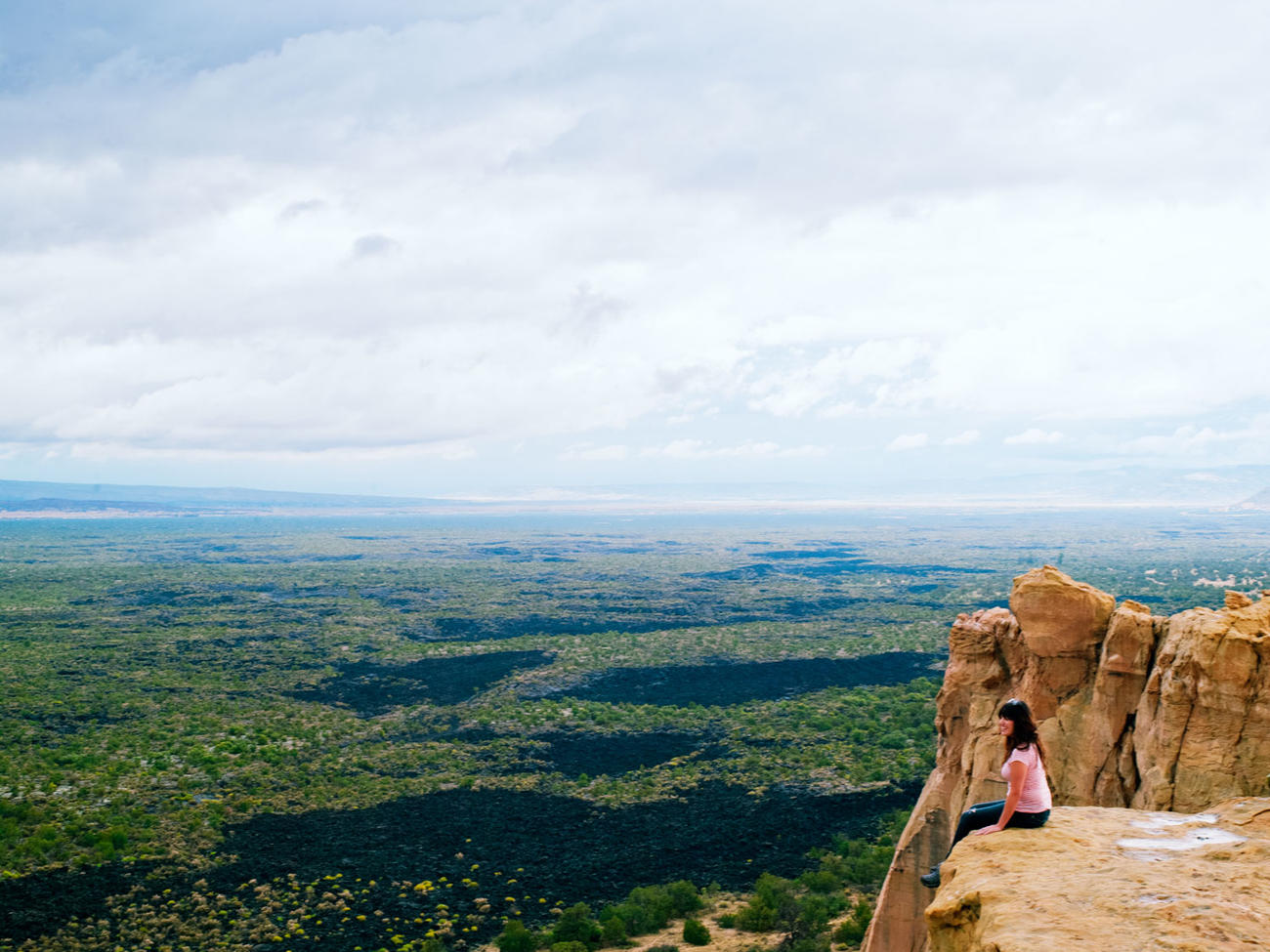
Taos to El Malpais
3 days, 325 miles

Andrea Gómez Romero
A Taos hiking buddy, Howard Greene, knows a route into the gorge, so we mount an expedition. We hike down a surprisingly gentle trail, passing through stunted piñons to a Ponderosa coppice and a fetchingly derelict bridge at river’s edge. I’ve found other passages to the river on previous trips, and they always manage to yield surprises. A secret hot spring, a cluster of petroglyphs, a moving memorial to a kayaker who misjudged the river’s power―it’s impossible to overestimate the Rio Grande’s arterial role in the life of New Mexico.
On to another powerful canyon: Chaco. It’s a long (230 miles), lonely, 4 1/2-hour drive, first on two-lane blacktop, then on a graded-dirt road. Chaco Canyon’s current isolation seems ironic: 900 years ago, Chaco was the most important political and ceremonial center in the Southwest. Today protected as Chaco Culture National Historical Park, Chaco Canyon’s ruins pose questions that resonate in my mind for weeks afterward. Why did its builders construct roads up to 30 feet wide, radiating to satellite communities as distant as 60 miles? How did the leaders command the labor to build “great houses” stacked three to five stories high? And why here, in a desolate gulch that gets 8.7 inches of rain in a year?
